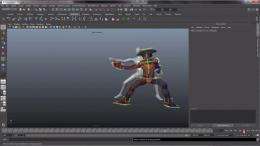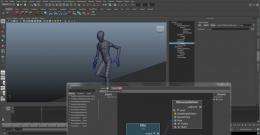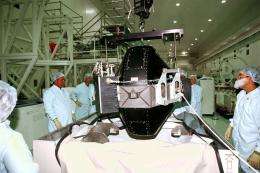Smooth moves: How space animates Hollywood

(�鶹��Ժ) -- If you’ve been to see Wrath of the Titans, then you’ve watched it in action. A computer programmer is using software he developed to control spacecraft to help animators make more realistic computer games and movies.
Originally designed to help guide satellites, the software now helps computers to render human movements smoothly and realistically.
It turns out that movements controlled effortlessly by our brains – picking up a cup, touching our toes or doing a little dance – take a lot of computing power.
“If you want to move your arm, you have to compute the angle of all the joints and the movement of the muscles,” says Alexandre Pechev, CEO of IKinema.
The human brain makes this happen near-instantaneously. But animators creating computer games or movies must often break the body down into parts, calculate their moves and then put the components back together – often resulting in choppy, unrealistic animation.

Using the mathematical routine he developed, the program at the heart of IKinema’s software crunches the numbers much more efficiently.
“If you have a human, you don’t have to cut the body into six individual chains and then stitch it together later,” Alexandre says. “What we do is move the whole body.”
The result, he says, is a program that can create realistic moving bodies in video games or on the movie screen.
“It works on any chain. Horse, cat, alien, scorpion, face or flower – it doesn’t matter what you’re animating.”

The software can be incorporated into video games and Hollywood studios like 20th Century Fox, Disney and ILM have all worked with IKinema’s software.
Spin-off from spacecraft guidance
The software was originally intended to guide spacecraft that use ‘control moment gyroscopes’ for attitude control. They consist of spinning flywheels, tilted using gimbals, to produce torque that can turn a spacecraft.
The best-known application of these gyroscopes is the International Space Station, which has four big units.
Less well known is the Turkey’s first remote sensing satellite Bilsat-1, launched in 2003. It includes an experimental payload of two small control moment gyroscopes developed by Surrey Satellite Technology Ltd. together with Surrey Space Centre, supported via ESA study contracts.
Provided by European Space Agency

















